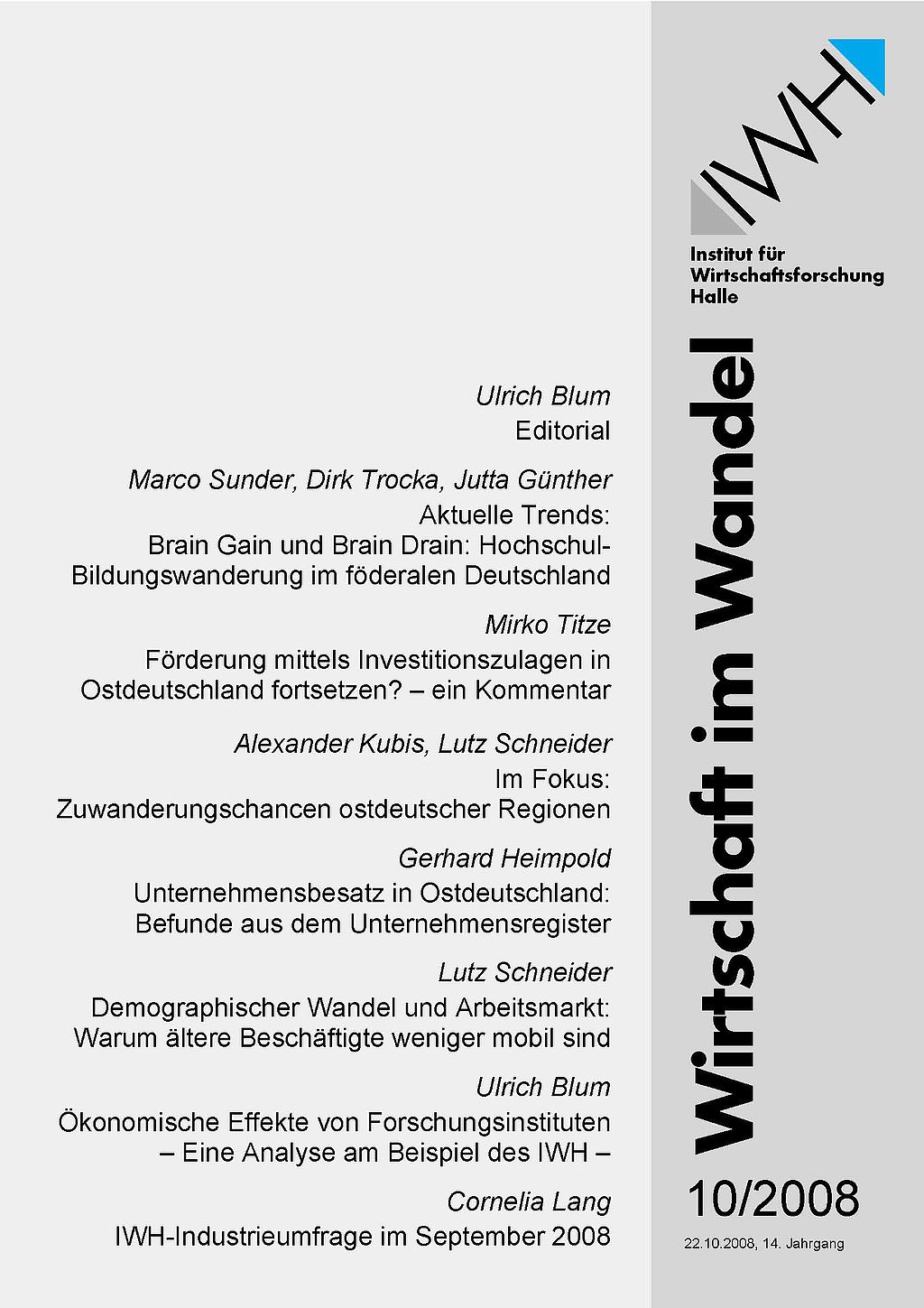
Firm Density in East Germany: Findings from the Business Register
The contribution focuses on the business density in East Germany in comparison with West Germany. For the purpose of the investigation, a new information source was used – the so-called Business Register. Business density in East Germany is of relevance for two reasons: First, when the wall came down in 1989, the East German economy suffered from the lack of private firms. Second, after 2000, a gap in terms of work places is still existent. The empirical data on business density in East Germany do not reveal an unequivocal picture. Measuring business density by comparing the number of firms with the respective number of population reveals a gap in terms of the number of businesses per 10 000 inhabitants in East Germany. The gap is above average with respect to firms in the manufacturing sector, and it is particularly high regarding larger manufacturing firms. Measuring the business density as a quota of the number of firms and the volume of Gross Domestic Product (GDP) reveals a reverse picture: The business density in relation to GDP is on average higher in comparison with the respective value in West Germany. Maybe, the size of the East German market sets limits regarding the number of firms which may act there. However, the size of the domestic market is not so relevant for the firms belonging to the manufacturing sector and to the business-related services since they are expanding to a large extent due to their export activities. Though from the manufacturing sector, relativly positive development perspectives can be expected, the number of large firms per 10 000 inhabitants is relatively low in comparison with West Germany. Public support for strengthening the business landscape in the East German manufacturing sector remains on the agenda of economic policy in Germany.




